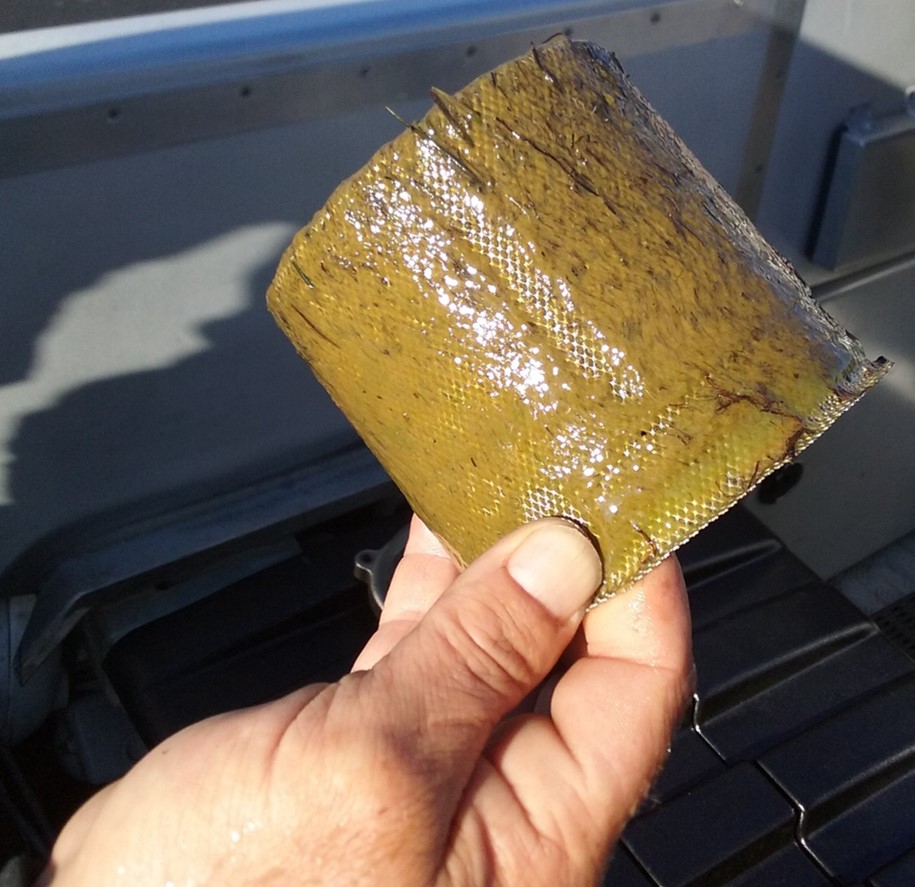Lindavia intermedia
Lindavia intermedia is a microscopic algae species that has been found for the first time in the Waikato and Manawatū-Whanganui regions. It poses no risks to human or animal health, and does not affect food sourced from lakes. It is unlikely to affect a lake's ecological health. However, it can cause lake snow – a sticky, mucus-like substance that hangs under the water. This slimy substance can be a nuisance to water users. It sticks to fishing gear and boat hulls, and can also cling to swimmers. It can clog boat filters, as well as industrial and domestic water supply filters.
The discovery of Lindavia intermedia has prompted a reminder to all water users to ‘check, clean, and dry’ when moving between waterways.
Where has Lindavia intermedia been found?
Lindavia intermedia was discovered in Lake Waikaremoana in 2008 and it has now been confirmed in Lake Taupō. Further investigation has indicated it is also present in Lake Rotoaira.
Waikato Regional Council is collecting and testing water samples collected from hydro lakes downstream from Lake Taupō, as well as Lake Rotongaio.
While other waterways may also have Lindavia intermedia, rivers and streams with fast moving flows do not provide an ideal environment for the algae to thrive.
What is Lindavia intermedia?
Lindavia intermedia is an extremely small algae species that floats in water and has the potential to create lake snow.
In the scientific world Lindavia intermedia is known as a diatom, meaning its cells are made out of silica.
There are an estimated 100,000 different types of diatoms world-wide. With so many different species it isn’t possible for scientists to study them all in great detail. Lindavia intermedia is one of the less researched species, so we know comparably very little about it.
Like all diatoms, Lindavia intermedia is microscopic. It’s smaller than the width of a human hair and it’s therefore difficult to detect its presence in lakes unless specific tests are carried out.
Lindavia intermedia poses no risk to food sourced from lakes, and there are no human or animal health risks. There is currently no known impact on the health of lakes.
What we're doing
Councils are working with stakeholders and researchers to find out more about what conditions influence the growth of Lindavia intermedia. In particular, we are keen to understand what causes it to produce lake snow like it has in some South Island lakes.

What is lake snow?
Lake snow is sticky and looks like strands of mucus or slime “hanging” under the water.
Lake snow may be found by members of the public as slime on fishing gear and boat hulls. It could also cling to them when swimming. It can clog boat filters, as well as industrial and domestic water supply filters.
Researchers don’t know for sure what causes Lindavia intermedia to produce lake snow. What we do know is that it’s likely to have been in these Waikato and Manawatū-Whanganui region lakes for more than a decade. Over that time, it has not produced lake snow and we have no evidence of it causing issues.
Protect your favourite waterways
Check, Clean, Dry
There is currently no known way of removing Lindavia intermedia or lake snow once it is present in a lake. Our aim is to prevent the spread.
NIWA research for lake snow presence in the South Island identified that methods used in Clean, Check, Dry are appropriate for use with lake snow.
You can help to protect your favourite waterways if you always check, clean, then dry any equipment that comes into contact with the water, between every waterway, every time.
Cleaning options
- Dishwashing detergent or nappy cleaner - 5% solution (500mls diluted to 10 litres in water). Soak or spray all surfaces for at least 1 minute, or
- Bleach - 2% solution (200mls diluted to 10 litres in water). Soak or spray all surfaces for at least 1 minute, or
- Freezing until solid.
Drying can be used as stand-alone treatment for non-absorbent items if you take great care to:
- make sure gear is completely dry to touch, inside and out
- leave dry for at least another 48 hours (after drying), before entering a different waterway.
I've seen lake snow - who do I tell?
Report anything that looks like lake snow to the Ministry for Primary Industry’s pest and diseases hotline: 0800 80 99 66.


To ask for help or report a problem, contact us
Tell us how we can improve the information on this page. (optional)